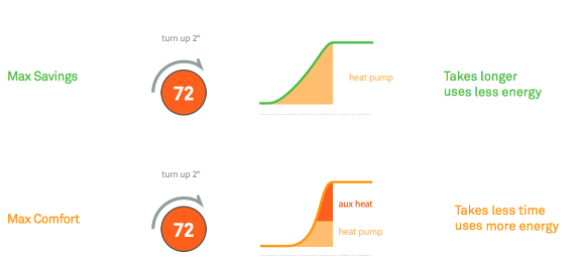Background Info: My house is all electric.
Last month when I got my electric bill, I flipped. It was triple that of any month prior. Now I know the cold (heating) can affect this so I decided to turn my thermostat back, even though I never had to before. I've finally got the results back and to my surprise, it's still pretty darn high (but somewhat lower thankfully). The head-scratcher is that not only did I turn my thermostat down 4-6 degrees, it also hasn't been very cold here lately. It has ran a fraction of what it did the month prior, and that's just from the ambient temp difference. This isn't considering the fact that the thermostat is off for half of the day while I'm at work. I also wouldn't deem my system extremely inefficient, as I have a heat pump.
Anyways, so I'm suspecting there's something else at play here. Perhaps another large appliance like the washer/dryer, dishwasher, hot water heater, etc. However, I do not know how to troubleshoot this or determine how much energy any one appliance is using.
Are there any pro-tips or easy/cheap ways that I can measure, or at least get a general idea, of which appliance in my house could be causing such high energy usage? I've seen before meters that you plug into the wall (in-between the socket and appliance), but I imagine those are not the most inexpensive route to take. I was wondering if maybe I could see the real-time load for the entire house? Like at the meter, and then I could one-by-one disconnect appliances and notate the fluctuations in total usage.
Anything like that would be great, or if you have better ideas, please share!
Quick Note: I recently had someone move into one of my spare rooms. One of my suspicions that I'm looking to verify is that they take extra long showers and overwork my hot water heater. I mainly suspect this because they mentioned that they ran out of hot water, something that has never happened to me before.
I wouldn't be concerned if I was still considered "efficient" by my electric company, but as you can see, I went from being relatively efficient to not even close.

UPDATE 3/3/2018 After doing some testing, I've come to realize that my heat pump isn't putting out any heat at all. So basically, I have been running off AUX heat exclusively. That combined with how cold it has been may very well explain the large spike in usage. I called a tech to come look at it. I will update and close this question once it has been verified.
UPDATE 12/10/2018 It has been a while so I thought I would share with everyone what the real issue was. After a few visits, it was finally discovered that my heat coils were stuck on. Even with the thermostat off, they were getting constant power. You could actually feel the heat radiating from the floor above the coils (they're in a crawl space). I'm lucky they found it, otherwise I could've had a fire on my hands. So yes, in essence, my AUX heat was running 24/7 for what was likely a month or two. CRAZY!


